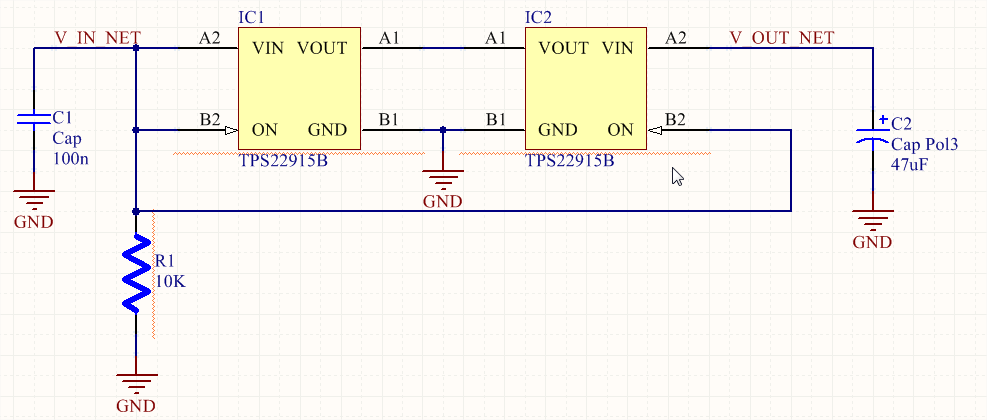Other Parts Discussed in Thread: TPS22914
Hello,
I have a circuit that is designed to isolate the V_IN_NET from any voltage on V_OUT_NET. Vout may be any voltage between 0 to 5V.
Vin has two states;
- Vin is unpowered, 0V, I want Vin to be isolated from Vout. Any voltage at Vout should not appear at Vin.
- Vin is powered, 5V, I want a low loss path to Vout.
When Vin transitions from unpowered to powered the operation that occurs is:
- IC1 sees VIN=5V, ON = 5V. IC2 ON =5V (but I assume the device isn't being powered as VIN = 0V)
- N-fet conducts between VIN and VOUT of IC1 which supplies VOUT of IC2.
- The body diode between VOUT and VIN of IC2 brings up VIN of IC2.
- IC2 is now powered, and N-fet conducts.
Question:
- Is there a path where in the case of IC2 VIN can be powered through the ON pin via a body bias diode, ESD diode?
- Is using the body diode between VOUT and VIN of IC2 a valid use case?
Best regards,
William


